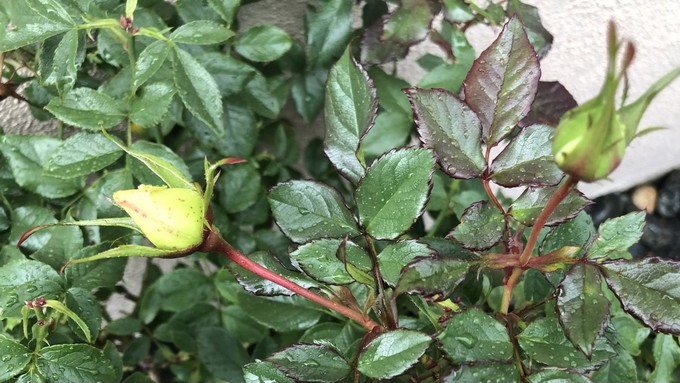
After so much rain, our gardens gets a chance to dry out

Some roses may still be trying to bloom but they need pruning. However, hold off on breaking out the pruners until the weather's drier, Tuesday or later. Kathy Morrison
We’re wet and getting wetter. How often do you see “100% chance” of rain in the Sacramento forecast? But according to the National Weather Service, more thunderstorms and showers are “definite” Sunday night into Monday.
After a half inch or more on Saturday, Sacramento can expect another inch Sunday night and Monday morning. Lots of wind (again) is expected with that wave of rain, too. Watch out for falling branches!
On Tuesday, we’ll finally start to dry out, says the weather service. A few showers may blow through midweek, but overall no real rain – not like we’ve seen – is in the forecast for later this coming week.
How much rain have we had this very wet January? Through Friday midnight, Downtown Sacramento totaled 5.5 inches – more than three times normal for those 13 days. Historically, January averages 3.64 inches.
After so much winter weather, take advantage of dry days by getting outdoors and giving your garden some TLC.
No. 1 task right now is clean up. Those storms left tons of tree debris all over the place – including branches stuck in other trees and shrubs.
If you see cracks in soil around trees, that means their roots may be moving – call an arborist! That tree is at risk of toppling.
Avoid walking on and working in muddy soil; it can compact easily, squeezing out the air. When that compacted soil dries (especially clay soils), it becomes like bricks. So, put off planting until the soil has a chance to drain.
* All this water can prompt crown rot. Pull mulch and tree litter away from trunks to let them dry out and breathe.
* Prune, prune, prune. Now is the time to cut back most deciduous trees and shrubs while you can see their structure. The exceptions are spring-flowering shrubs such as lilacs.
* Now is the time to prune deciduous fruit trees. Clean up leaves and debris around the trees to prevent the spread of disease.
* Prune roses, even if they’re still trying to bloom. Strip off any remaining leaves, so the bush will be able to put out new growth in early spring.
* Clean up leaves and debris around your newly pruned roses and shrubs. Put down fresh mulch or bark to keep roots cozy.
* When forced bulbs sprout, move them to a cool, bright window. Give them a quarter turn each day so the stems will grow straight.
* Divide daylilies, Shasta daisies and other perennials.
* Cut back and divide chrysanthemums.
* Once the soil dries out a little, plant bare-root roses, trees and shrubs. If your ground seems saturated, consider planting your garden additions in large black plastic pots. The black plastic will warm up faster than the ground soil and give roots a healthy start. Then, transplant the new addition (rootball and all) into the ground in April as the weather warms.
* Browse through seed catalogs and start making plans for spring and summer.
Comments
0 comments have been posted.Sacramento Digs Gardening to your inbox.
Sites We Like
Garden Checklist for week of July 21
Your garden needs you!
* Keep your vegetable garden watered, mulched and weeded. Water before 8 a.m. to reduce the chance of fungal infection and to conserve moisture.
* Feed vegetable plants bone meal, rock phosphate or other fertilizers high in phosphate to stimulate more blooms and fruiting. (But wait until daily high temperatures drop out of the 100s.)
* Don’t let tomatoes wilt or dry out completely. Give tomatoes a deep watering two to three times a week.
* Harvest vegetables promptly to encourage plants to produce more. Squash especially tends to grow rapidly in hot weather. Keep an eye on zucchini.
* Pinch back chrysanthemums for bushy plants and more flowers in September.
* Remove spent flowers from roses, daylilies and other bloomers as they finish flowering.
* Pinch off blooms from basil so the plant will grow more leaves.
* Cut back lavender after flowering to promote a second bloom.
* It's not too late to add a splash of color. Plant petunias, snapdragons, zinnias and marigolds.
* From seed, plant corn, pumpkins, radishes, winter squash and sunflowers.